Floriculture is a better business in India, with huge earning potential for farmers. However, there are limits to earning with floriculture, and some farmers have gone bankrupt while others have made crores in a year. One key factor that determines success is the investment made in the business.
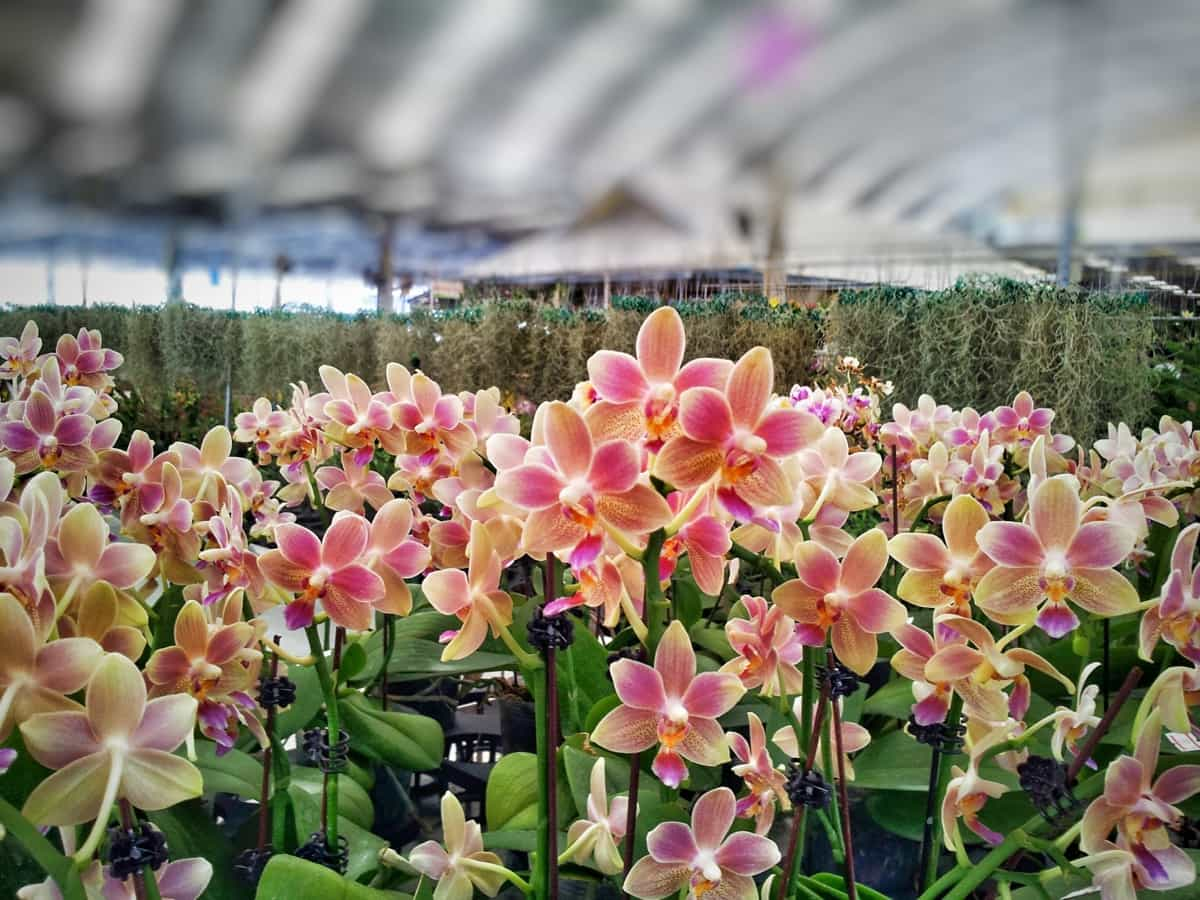
Orchids are one of the big players in the floriculture industry, but 80% are imported from Thailand, making them very expensive in India. However, cultivating orchids in India can be profitable if the quality matches that of imported orchids, and farmers can provide reliable and consistent business.
Orchid Farming Business Plan
Facts About Orchid Farming
- Orchids grow on all continents except Antarctica and come in various colors, species, hybrids, miniature, and standard sizes.
- Phalaenopsis and Cymbidium are popular species of orchids.
- Vanilla orchids are found in most tropical regions and are known for their vanilla flavor.
- Growing orchids requires patience and proper care, and different species require different environmental conditions.
- Orchids are becoming expensive because they are becoming extinct.
- The world’s smallest orchid is “Platystele Jungermannioides,” and the largest is “Grammatophyllum Speciosum.”
- Orchids are used to make ice cream in Turkey.
- Orchids are found in almost every color except black.
Orchid Farming Business
Orchids are one of the largest flowering plant families in the world, with over 100,000 hybrids. Vanilla and Catalunya flowers are two varieties of orchids. Most orchids are perennial and have soft stems, with 70% being epiphytes that rely on other plants or dead barks to survive. Orchids can live up to 20 years, with indoor orchids living up to 15 years. Orchid flowers produce seeds that require specific conditions to germinate, including perfect weather, humidity, and fungus.
Though each seed pod contains millions of seeds that scatter like dust, they do not have the necessary nutrients to germinate and become plants. A minuscule amount of these seeds grow to full plants in potting media, and germinating them successfully requires lab facilities, knowledge, and patience. When provided with the right conditions, the seeds will germinate in weeks but take months to become a plant that can be handled.
In case you missed it: How to Increase Female Flowers in Your Gourds: Unlock the Secret for a Better Harvest
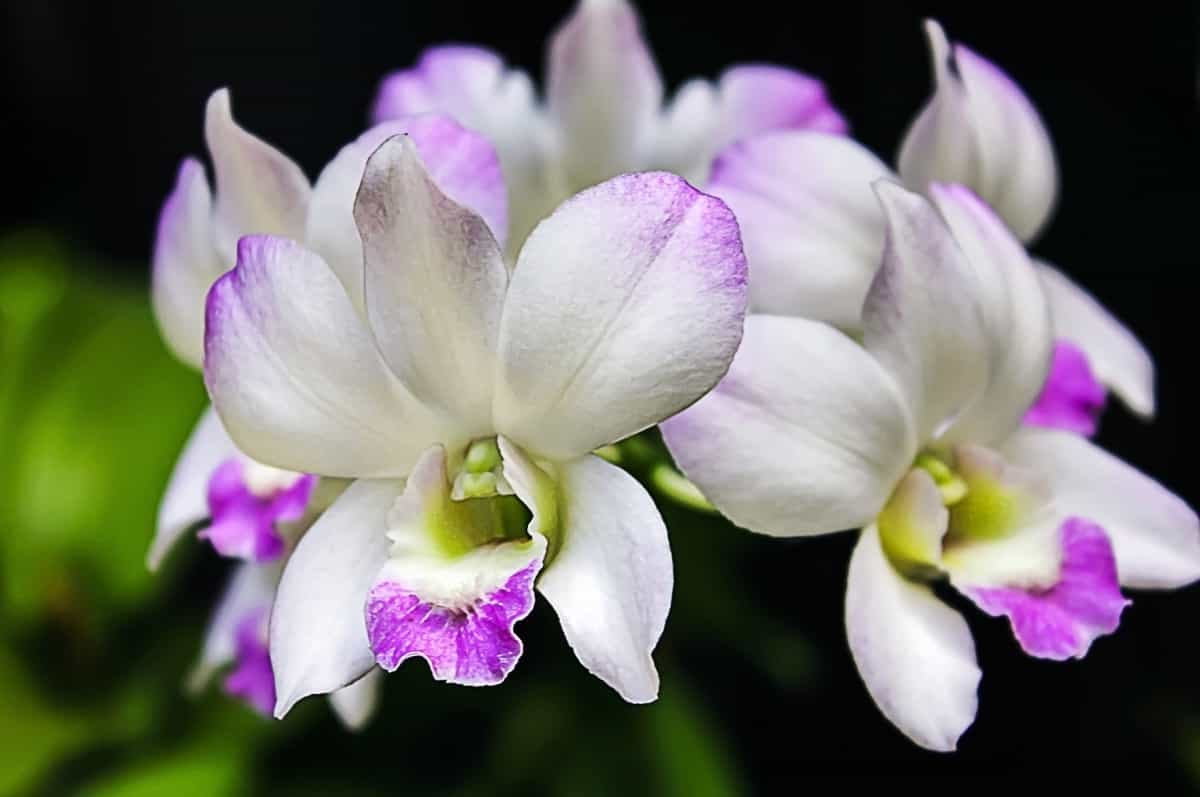
Growing Conditions for Orchid Farming
Orchid Farming generally thrives in warm, humid weather with light shade. Most orchids prefer to grow on barks or trees and do not require soil. Indoor orchid care may initially seem daunting, but it is simpler. Orchids can be grown indoors with 50-70% sunlight, as they do not require direct sunlight.
They prefer to hang, so it is recommended to hang their pots. Orchids require high humidity, which can be achieved by spraying them at least 3-4 times daily. Fertilizing them once a week is also necessary. Orchids can be grown successfully indoors if the above-mentioned conditions are provided.
How to Grow Orchids and Care and Management
Orchids mostly grow on tree bark and have roots that absorb water, moisture, and nutrients from the air and decaying bark. You can grow orchids by fixing them onto tree bark, peat moss, coconut husk, or a wooden slab and watering them regularly. Orchids don’t like too much water, so make sure the water drains quickly.
Orchid pots have holes on all sides to help with drainage. Please don’t cover the protruding roots with more medium, as they need to absorb humidity from the air. It’s best to keep orchids in locations with moderate light and high humidity, such as the kitchen or bathroom. Bedrooms and living areas with fans or air conditioning could be better. Regularly spraying water on the orchids helps them grow.
Care and Management of Orchid
Light
- Orchids require bright indirect sunlight but not direct sunlight.
- Some varieties prefer more indirect sunlight, while others can tolerate low light conditions. Keep the temperature between 60-85°F
Temperature
- Room temperature is ideal for orchids, with a 20 to 30 degrees Celsius temperature range.
- Some orchids prefer colder temperatures at night, but extreme temperature changes should be avoided.
- Moderate temperature differences of approximately 10 degrees Celsius between day and night are recommended.
Soil & Growing Media
- Orchids do not require soil; they can grow in coconut husks, coir, tree bark, and even coal.
- The growing medium should be highly absorbent and capable of draining water to avoid accumulation.
- The medium should be treated for fungal infections, and the bark can be boiled in hot water for sterilization.
In case you missed it: Key Rules to Increase Female and Male Flowers in Cucumbers
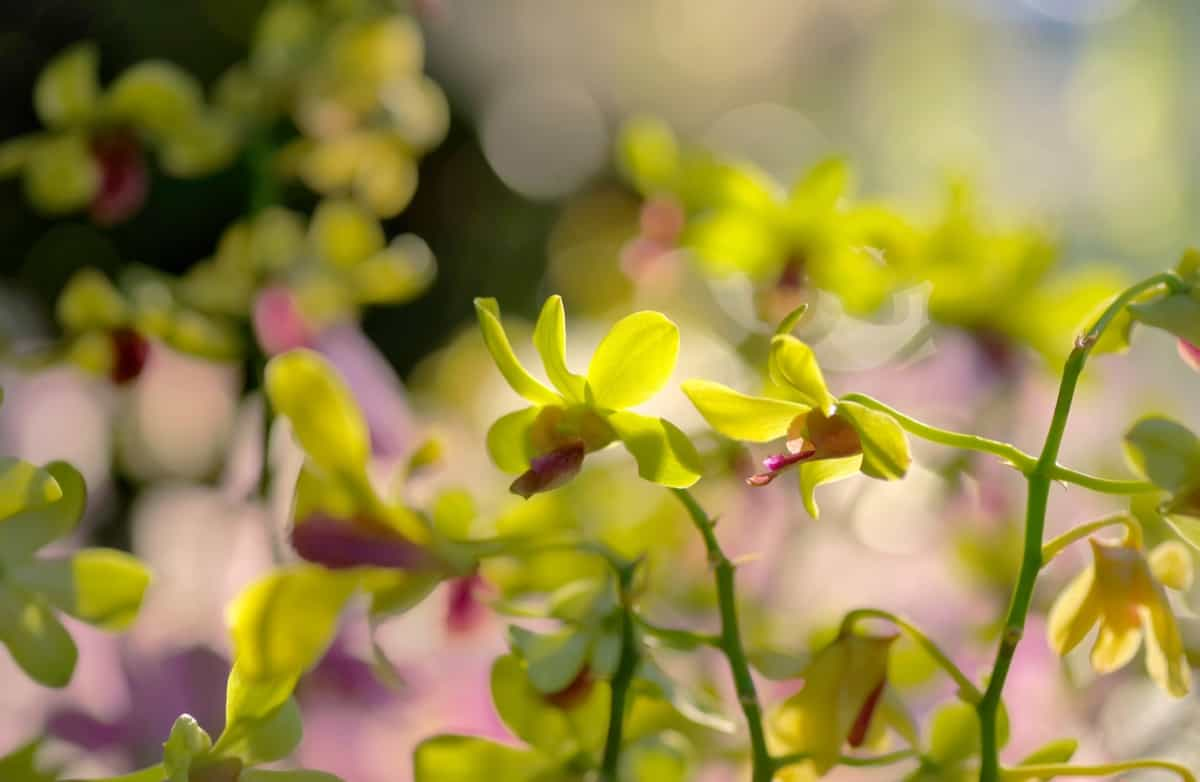
Watering & Misting
- Misting is a common method of watering orchids in large nurseries, but some orchids do not prefer it.
- Avoid getting overhead watering on the leaves and flowers; water the root area and medium instead.
Humidity
- Maintain high humidity. Use a humidifier in dry winters.
- Be careful with humidity levels in commercial setups.
Fertilizer and Nutrition
- Regularly fertilize orchids with liquid fertilizers.
- Choose from a range of orchid fertilizers available in the market.
- Organic fertilizers are rarely used.
Potting and Repotting
- Orchids rarely require repotting.
- Stack potting media (usually tree bark and coal) from time to time
- If roots appear outside the pot, add some wood bark or coal occasionally.
Pruning and Training
- Prune old or dead stems.
- Orchids do not require training but can be divided if crowded.
Air Circulation
- Control air circulation, avoid windy weather.
- Excessive use of fans or air-conditioning can be detrimental.
- Moderate airflow is required to prevent diseases and fungal problems.
Dormancy
- Orchids are dormant during winters when temperatures drop below 20 degrees.
- Dormancy can range from 6-9 months.
- In moderate temperatures, dormancy involves dropping leaves and establishing new roots.
Propagation
- Propagation methods vary depending on the variety.
- Commercial propagation is done through tissue culture and stem cuttings.
- Propagation through seeds is hard and rarely practiced.
Encourage Blooming
- Fertilize orchids to encourage blooming.
- The blooming of orchids is important. Manage nutrition accordingly.
Best Commercially Grown Orchid Varieties
- Phalaenopsis Orchid, known as the “Moth Orchid,” the Phalaenopsis is the most popular orchid among growers and collectors. It has large, round petals in various colors and can bloom for months.
- Cattleya Orchid: This orchid is known for its vibrant colors and bold patterns. It has large, showy flowers and a sweet fragrance, making it a favorite among orchid enthusiasts.
- Dendrobium Orchid: These orchids come in various shapes and sizes, from small, delicate blooms to large, showy flowers. They are easy to grow and produce long-lasting blooms.
- Oncidium Orchid: Also known as the “Dancing Lady Orchid,” this plant has small, delicate blooms with frilly petals that dance in the breeze. They come in different colors and are relatively easy to grow.
- Vanda Orchid: This orchid has large, flat blooms in vibrant colors and can grow quite large. They require bright, indirect light and high humidity to thrive.
- Miltonia Orchid: These orchids have delicate, fragrant flowers in different colors, including pink, purple, and white. They are relatively easy to grow and make an excellent addition to any orchid collection.
- Brassavola Orchid has small, fragrant blooms and is known for its unique shape and long, trailing roots. They are relatively simple, easy to care for, and a great addition to any orchid collection.
- Paphiopedilum Orchid: Also known as the “Lady Slipper Orchid,” this plant has a unique, slipper-shaped bloom and a variety of colors and patterns. They are relatively easy to grow and make an excellent addition to any orchid collection.
- Stanhopea Orchid: These orchids are known for their fragrant, showy blooms and unique shape. They require specific growing conditions, including high humidity and good airflow, but are worth the effort.
- Coelogyne Orchid: This orchid has small, delicate blooms and a sweet fragrance. They are relatively easy to grow and add to any orchid collection.
In case you missed it: Top 25 Flowering Plants that Bloom in Winter
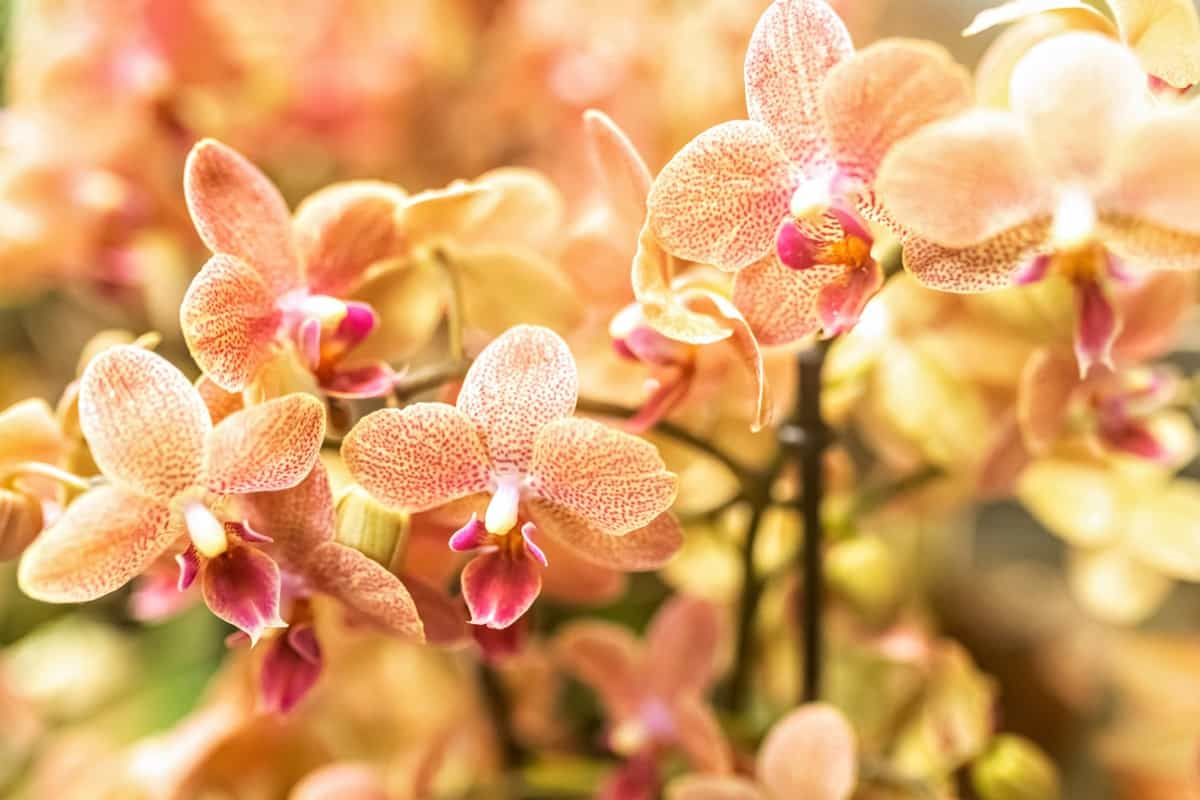
Commercially Grown Orchid Varieties in India
Cymbidium, Dendrobium, Phalaenopsis, Oncidium, Vanda, and Mokara are India’s most commonly grown orchid varieties. Cymbidium prefers cooler temperatures and good sunlight, while Dendrobium tolerates hot or cold climatic conditions and blooms throughout the year. Phalaenopsis is a slightly harder plant to maintain and requires lower light conditions.
Oncidiums vary in light requirements depending on their growing stage, and Vanda prefers humid, warm weather with indirect sunlight. Mokara is a hybridized orchid that is easy to grow and survives well in warmer climates. Each variety has different requirements for optimal growth and flowering, making it important to understand the specific needs of each type when cultivating them.
Orchid Farming Business Plan
Market Research
- Identify the demand for orchids in your target market
- Find out the types of orchids that are in high demand
- Research the prices of orchids in the market
Business Plan
- Determine the size of your orchid farm
- Calculate the start-up costs such as land, greenhouse, equipment, and labor
- Develop a marketing strategy for selling your orchids
- Decide on the target market (wholesale, retail, or both)
- Set financial goals and a timeline for achieving them
Location
- Choose a location with good soil drainage, access to water, and adequate sunlight
- Select a location that is convenient for the transportation of your products
Growing
- Determine the type of orchids to grow based on market demand and climate
- Purchase high-quality seeds or seedlings
- Develop a system for irrigation, fertilization, and pest control
- Train your employees in proper orchid care techniques
Marketing
- Establish partnerships with local florists, nurseries, and garden centers
- Attend Exhibitions to showcase your orchids
- Advertise your products on social media and other online platforms
In case you missed it: Earning 70 Lakhs from Rose Cultivation in 5 Acre Polyhouse: The Success Story of a Flower Farmer
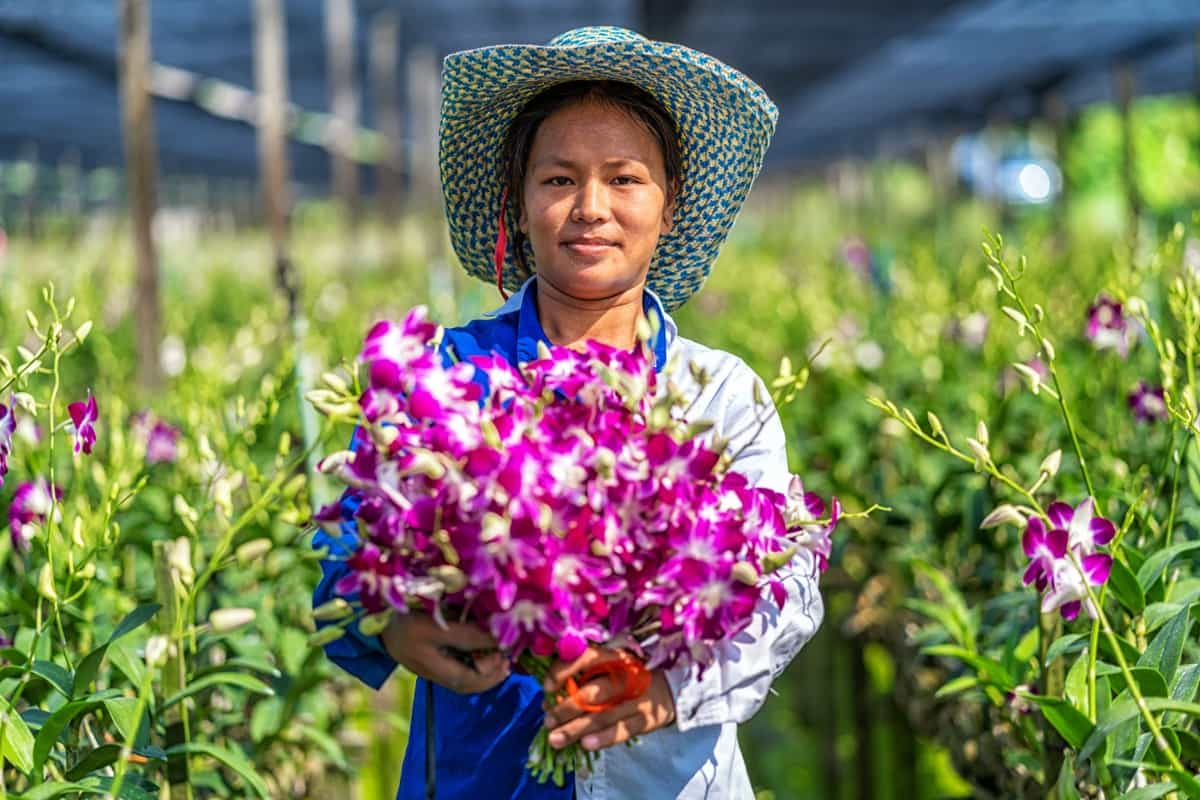
Financial Management
- Track your expenses and revenue using accounting software
- Regularly review your financial statements and make necessary adjustments
- Develop a system for inventory management to ensure you have enough orchids for demand
Understanding the Profit Potential Orchid Farming
The profitability of orchid farming has been a topic of interest for many farmers, with reports of some earning over one crore per year. While it is possible to profit in this industry, more than one crore per acre annually seems questionable. Challenges such as marketing and transportation difficulties and the perishable nature of the flowers add to the complexity of the business.
However, selling plantlets can be more profitable than selling flowers, as there is a limit to the number of flowers produced per year. India is the largest importer of orchids, importing 80% of its requirement from Thailand, the Netherlands, and China. While the import value of orchids is relatively low compared to other products, the market for orchids in India remains promising. Despite the challenges involved, orchid farming has the potential to be a profitable business.
Challenges Faced By Farmers in Orchid Farming
Transportation is a major challenge for farmers in India, especially when it comes to delivering their produce to faraway places. This is particularly true for orchid farmers, who face many obstacles in transporting their flowers to the end users. While fruits and vegetables have a longer shelf life, flowers are short-lived and must be delivered quickly to the buyer. Most of the orchids produced in India come from the eastern states, with Arunachal Pradesh being a major market.
In the south, Kerala has a few orchid farmers, but the rest of the country relies on these few states in the east and Kerala. Orchid farmers in Kerala transport their flowers to cities like Rajasthan, Mumbai, Chennai, and Bangalore. At the same time, the eastern states have a better market in Delhi and the northern part of India. Cut flowers are transported by air freight, adding to the already high product cost. This makes it challenging for farmers to sell their orchids at a profitable price.
Training and Marketing in Orchid Farming Business
Most farmers are used to growing rice, wheat, cereals, and vegetables and must familiarize themselves with cultivating flowers. Cut flowers are a relatively new concept and require a different process, from understanding the plant and flower itself to processing, packing, and transportation. Orchids require extra care as they are epiphytes and not grown in soil. Education on flower cultivation and orchid care was hard until recent technology, like YouTube, made it more accessible.
In case you missed it: 11 Potting Soil Mixes for Flowering Plants: Top and Best List
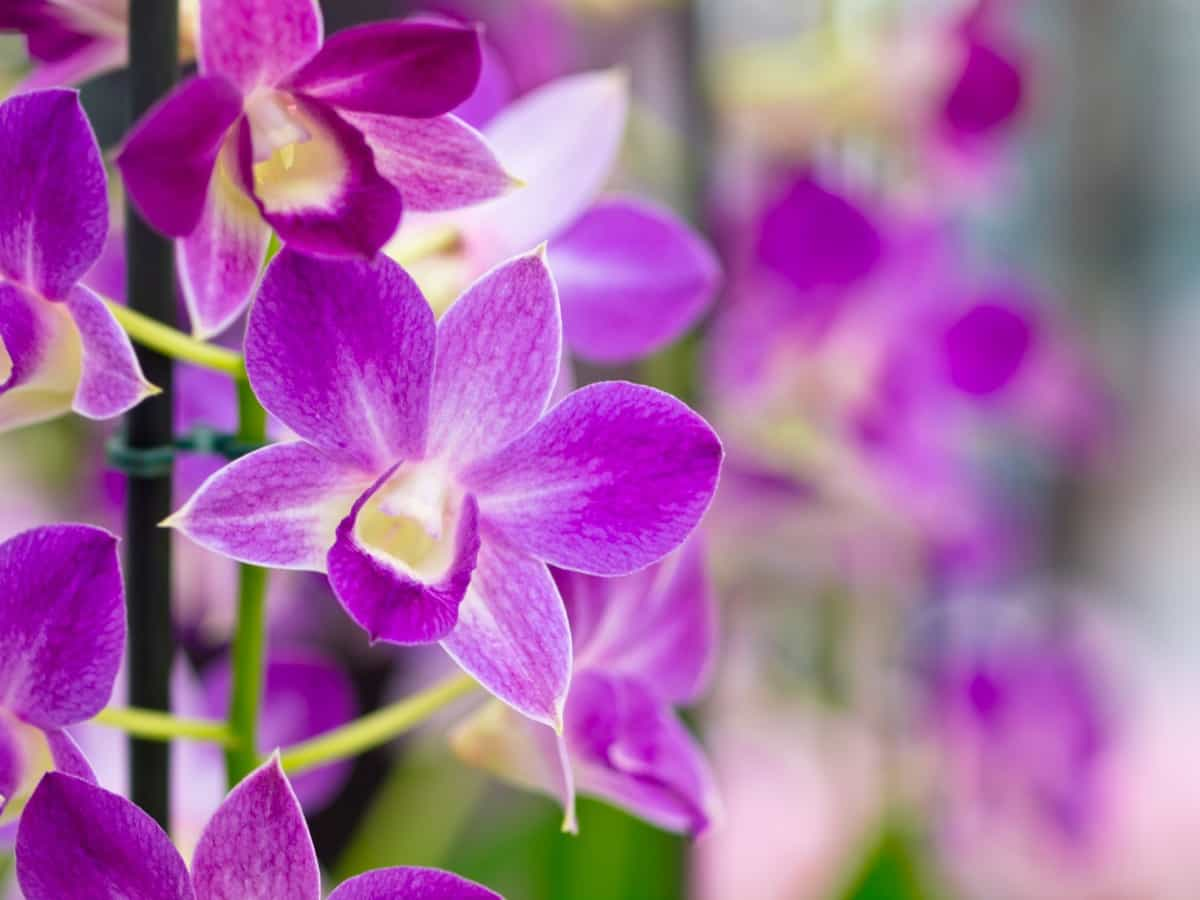
Marketing orchid flowers and plants can be challenging for farmers as they are not sold in traditional markets. Instead, orchid farmers must find alternative sales channels, such as tying up with florists, restaurants, hotels, and exporters. However, reaching these potential buyers can be difficult for many farmers, and sales tend to be concentrated in urban areas where the price is more acceptable.
Conclusion
To revitalize your orchid farming business, implement strategic changes that increase profitability. This includes improving product quality, optimizing production processes, building a strong brand, and leveraging technology. You can create a sustainable and successful orchid farming business by staying current with market trends and consumer demands.
- How to Build a Low-budget Goat Shed: Cheap Ideas and Tips
- Goat Farming Training Programs in India: A Beginner’s Guide
- Types of Pesticides Used in Agriculture: A Beginner’s Guide
- Economical Aquaculture: A Guide to Low-Budget Fish Farming
- 15 Common Planting Errors That Can Doom Your Fruit Trees
- How to Make Houseplants Bushy: Effective Tips and Ideas
- Innovative Strategies for Boosting Coconut Pollination and Yield
- Pollination Strategies for Maximum Pumpkin Yield
- The Complete Guide to Chicken Fattening: Strategies for Maximum Growth
- Natural Solutions for Tulip Problems: 100% Effective Remedies for Leaf and Bulb-Related Issues
- Revolutionizing Citrus Preservation: Towards a Healthier, Greener Future
- Natural Solutions for Peony Leaf and Flower Problems: 100% Effective Remedies
- Maximizing Profits with Avocado Contract Farming in India: A Comprehensive Guide
- Natural Solutions for Hydrangea Problems: 100% Effective Remedies for Leaf and Flowers
- The Ultimate Guide to Choosing the Perfect Foliage Friend: Bringing Life Indoors
- From Sunlight to Sustainability: 15 Ways to Use Solar Technology in Agriculture
- The Ultimate Guide to Dong Tao Chicken: Exploring from History to Raising
- The Eco-Friendly Makeover: How to Convert Your Unused Swimming Pool into a Fish Pond
- Mastering the Art of Delaware Chicken Farming: Essentials for Healthy Backyard Flocks
- 20 Best Homemade Fertilizers for Money Plant: DIY Recipes and Application Methods
- How to Craft a Comprehensive Free-Range Chicken Farming Business Plan
- Brighten Your Flock: Raising Easter Egger Chickens for Beauty and Bounty
- How to Optimize Your Poultry Egg Farm Business Plan with These Strategies
- Subsidy for Spirulina Cultivation: How Indian Government Schemes Encouraging Spirulina Farmers
- Ultimate Guide to Raising Dominique Chickens: Breeding, Feeding, Egg-Production, and Care
- Mastering the Art of Raising Jersey Giant Chickens: Care, Feeding, and More
- Ultimate Guide to Raising Legbar Chickens: Breeding, Farming Practices, Diet, Egg-Production
- How to Raise Welsummer Chickens: A Comprehensive Guide for Beginners
- How to Protect Indoor Plants in Winter: A Comprehensive Guide
- Ultimate Guide to Grow Bag Gardening: Tips, Tricks, and Planting Ideas for Urban Gardeners
- Guide to Lotus Cultivation: How to Propagate, Plant, Grow, Care, Cost, and Profit
- Agriculture Drone Subsidy Scheme: Government Kisan Subsidy, License, and How to Apply Online
- Ultimate Guide to Raising Araucana Chickens: Breed Profile, Farming Economics, Diet, and Care
- Bringing Hydroponics to Classroom: Importance, Benefits of Learning for School Students
- Ultimate Guide to Raising Polish Chickens: Breed Profile, Farming Economics, Diet, and Care
- Ultimate Guide to Raising Australorp Chickens: Profile, Farming Economics, Egg Production, Diet, and Care
=